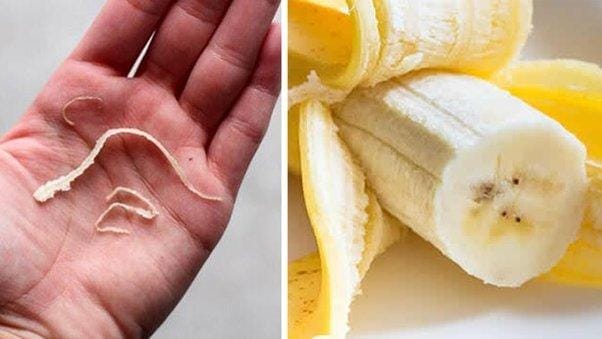Remove the yellow skin from a banana and there they are, haunting you. They run vertically along the fruit, demanding to be removed with precision. They hang lifelessly from the flesh of ripe bananas, but cling mercilessly to less ripe ones. They are never wanted anyway. We’re talking about those annoying white strings on bananas, or more technically, “phloem bundles.”
First of all, those strings on bananas have a name; they are called “phloem packets.” The phloem in a plant ensures the transport of nutrients throughout the plant, from leaves to fruit. Phloems are important factors in the growth and health of a plant. So the strings are not only useful for the banana itself, they are also completely edible!
There is no need to remove the phloem before eating your banana. If only they tasted a little better… Scientists say that, in theory, it’s possible to create bananas without phloem. However, since many bananas die due to diseases, it is much more important to create disease-resistant bananas.
Phloems may not taste very good, or maybe it’s something you’re imagining, but they’re pretty healthy! Besides their important role in the growth of bananas, they also contain many vitamins, such as potassium, fiber, vitamin A and vitamin B6. Once the banana is harvested, these vitamins remain in the phloem, making them very healthy.
A recent study showed that bananas covered in brown spots are even healthier than those without spots. So these are definitely the ones we should be eating. Eating an overripe banana may have some unexpected benefits. Research has shown that eating a brownish banana has incredible health benefits. They impress us a lot and so we have put them in a handy little list:
Reduce your chances of getting cancer! They contain an ingredient that destroys cancer cells.
Regulate your blood pressure! When bananas are overripe, they contain more potassium, which stimulates stable blood pressure.

